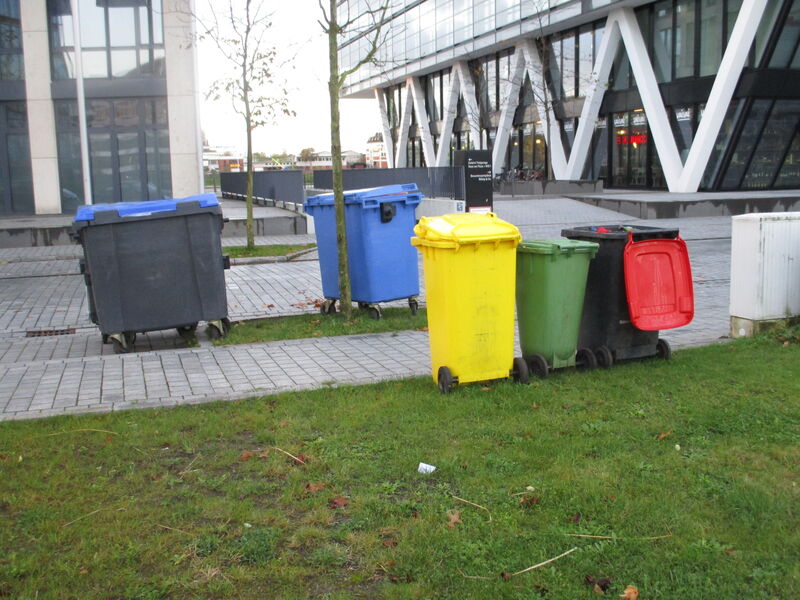"Baugesetzbuch" - §§1-5 - Wash paragraphs with ChatGPT – summarize lusciously
§ 1 Task, concept and principles of land use planning
New land use planning brings sustainable urban development! The building code demands social, economic and environmental protection requirements in harmony. Climate protection, landscape conservation and interior development are the focus. From housing needs to environmental protection - everything in one plan! Construction projects must address the concerns of the environment, economy, and population. The future of construction is green, socially just and sustainable!
§ 1a Supplementary regulations on environmental protection
New environmental protection rules for construction projects! No more sealing of surfaces - soil is used sparingly and sustainably. Communities rely on internal development through reuse, densification and more. The focus is on landscape protection and climate protection: impairments are compensated for and forest and agricultural areas are protected. Climate change adaptation and mitigation as key planning factors. The future of construction begins now!
§ 2 Preparation of the development plans
Municipalities are taking the helm! Urban development plans must now be drawn up with the utmost care. Municipalities coordinate and take environmental protection concerns into account. Environmental assessments are becoming mandatory - the focus is on significant environmental impacts. The future of construction: transparent, environmentally conscious and well coordinated!
§ 2a justification for the draft development plan, environmental report
Obligation to be transparent: Municipalities must provide clear justification for building plans! Goals, purposes and environmental impacts must be disclosed. The environmental report becomes an integral part. Construction plans with a well-thought-out basis for a sustainable future!
§ 3 Public Participation
Municipalities must present plans publicly! Those affected have the right to express themselves and discuss. Construction plans will be published on the Internet for a month and additional access options will have to be created. Comments can be submitted electronically. Results will be communicated and comments not taken into account will be published. When it comes to land use plans, timely objections are crucial – later objections are excluded!
§ 4 Participation of the authorities
Bureaucracy in the construction process: Authorities and stakeholders must be involved! The community informs and obtains statements – all electronically. Deadlines for comments may not be less than 30 days. Authorities announce planned measures. After completion of the land use planning process, authorities inform about unforeseen negative environmental impacts.
§ 4a Common regulations on participation
Citizen participation in the construction process: New rules for comprehensive information and evaluation! The public and authorities are informed and involved at the same time. If changes to the draft plan are made, re-publication and comments are sought. Cross-border projects require international participation. Comments must be submitted in good time, otherwise they will not be taken into account. Digitalization The construction process follows IT planning council resolutions and online access law.
§ 4b Involvement of a third party
External third parties can be brought in to quickly handle land-use planning procedures. This not only includes the preparation and implementation of procedural steps, but also enables third parties to be commissioned for mediation and conflict resolution outside of court.
§ 4c Monitoring
Municipalities monitor the environmental impacts of development plans in order to identify unforeseen negative effects at an early stage. Remedial action is taken based on monitoring measures in the company's environmental report and government information.
§ 5 Contents of the land use plan
The land use plan outlines the planned urban development for the entire municipal area. Areas and representations are excluded if they do not affect the basic development features and the municipality plans to integrate them later. The plan can include various elements, including building areas, utilities, traffic areas, green areas, use restrictions and water areas. In addition, areas can be designated for environmental compensation in connection with interventions in nature and the landscape. Special structural requirements, mining areas and areas contaminated with environmentally hazardous substances are also identified. The land use plan should contain information on flood areas, risk areas and flood formation areas. Existing regulations and monument protection regulations as well as planned flood areas and risk areas will be adopted for notification purposes. The plan is accompanied by a justification with the necessary information.
The information has not(!) been checked. I don't care if the facts are correct, as long as the statements are consistent with the current delusion about how one should perceive reality today according to the general mainstream. For translations from German to English or French, we relied on translate.google.de. Dr. Dieter Porth
![[Translate to Düddelei - a TYPO3 experimental platform:]](/fileadmin/_processed_/1/8/csm_Der_Himmel_brennt_ee3011a7ab.jpg)
![[Translate to Düddelei - a TYPO3 experimental platform:]](/fileadmin/_processed_/9/a/csm_Wenn_keiner_kuckt_kann_man_entsorgen_d40bc82f7e.jpg)
![[Translate to Düddelei - a TYPO3 experimental platform:]](/fileadmin/_processed_/6/a/csm_Dr_Rotbart_40e0b624a5.jpg)
![[Translate to Düddelei - a TYPO3 experimental platform:]](/fileadmin/_processed_/e/1/csm_Weserbankbesetzer_193d518d1c.jpg)
![[Translate to Düddelei - a TYPO3 experimental platform:]](/fileadmin/_processed_/7/5/csm_Dr_Blaubart_998911feec.jpg)
![[Translate to Düddelei - a TYPO3 experimental platform:]](/fileadmin/_processed_/3/5/csm_Kirche_mit_wolkigen_Hintergrund_ea235d07e7.jpg)
![[Translate to Düddelei - a TYPO3 experimental platform:]](/fileadmin/_processed_/f/5/csm_Bauromantik_40a90e519c.jpg)
![[Translate to Düddelei - a TYPO3 experimental platform:]](/fileadmin/_processed_/d/6/csm_Beobachter_des_Regenbogens_895fb610bc.jpg)
![[Translate to Düddelei - a TYPO3 experimental platform:]](/fileadmin/_processed_/8/1/csm_Regenbogen-Attacke_0600290371.jpg)
![[Translate to Düddelei - a TYPO3 experimental platform:]](/fileadmin/_processed_/a/e/csm_Dr_Gruenbart_491dca5239.jpg)
![[Translate to Düddelei - a TYPO3 experimental platform:]](/fileadmin/_processed_/a/2/csm_Abendromantik_af46eefaa3.jpg)
![[Translate to Düddelei - a TYPO3 experimental platform:]](/fileadmin/_processed_/0/4/csm_UEberall_gibt_es_eine_Tuer_7458cd4b33.jpg)
![[Translate to Düddelei - a TYPO3 experimental platform:]](/fileadmin/_processed_/f/d/csm_Morgenstimmung_im_Bremer_Bahnhof_42cd8ff28a.jpg)
![[Translate to Düddelei - a TYPO3 experimental platform:]](/fileadmin/_processed_/6/4/csm_Rotlicht_fuer_Kelloggs_in_Bremen_781841cecf.jpg)
![[Translate to Düddelei - a TYPO3 experimental platform:]](/fileadmin/_processed_/3/5/csm_Flutwelle_in_die_kleine_Werder_in_Bremen_52e978a1a7.jpg)
![[Translate to Düddelei - a TYPO3 experimental platform:]](/fileadmin/_processed_/a/f/csm_Abendstimmung_in_Bremen_beebf1f2e1.jpg)
![[Translate to Düddelei - a TYPO3 experimental platform:]](/fileadmin/_processed_/a/7/csm_Dr_Blaubart_im_Park_2d63c9df68.jpg)
